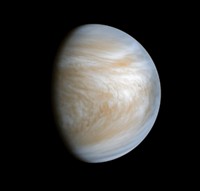Advertisement
Grab your lab coat. Let's get started
Welcome!
Welcome!
Create an account below to get 6 C&EN articles per month, receive newsletters and more - all free.
It seems this is your first time logging in online. Please enter the following information to continue.
As an ACS member you automatically get access to this site. All we need is few more details to create your reading experience.
Not you? Sign in with a different account.
Not you? Sign in with a different account.
ERROR 1
ERROR 1
ERROR 2
ERROR 2
ERROR 2
ERROR 2
ERROR 2
Password and Confirm password must match.
If you have an ACS member number, please enter it here so we can link this account to your membership. (optional)
ERROR 2
ACS values your privacy. By submitting your information, you are gaining access to C&EN and subscribing to our weekly newsletter. We use the information you provide to make your reading experience better, and we will never sell your data to third party members.
Analytical Chemistry
Skyward View
by Mitch Jacoby
March 8, 2010
| A version of this story appeared in
Volume 88, Issue 10

By probing the skies with laser light, for 40 years researchers have been learning about the clouds, aerosols, and chemical constituents that make up Earth's atmosphere. Directly analogous to radar, which stands for radio-wave detection and ranging, the collection of light-based detection and ranging (LIDAR) methods relies on pulsed laser beams being scattered from atoms, molecules, and particles in the atmosphere and reflected back at a telescope positioned near the laser source. One version of the technique, based on Rayleigh scattering from nitrogen and oxygen molecules, is used to study climate change by determining variations in seasonal temperature profiles through altitudinal "slices" between 35 and 90 km, according to Vincent B. Wickwar, a physics professor and staff member at the Center for Atmospheric & Space Sciences at Utah State University, Logan.
Other LIDAR methods probe changes in the concentrations of ozone, carbon dioxide, and water vapor throughout that altitude range and provide data that are key to understanding the abundances of those species and the chemical reactions they undergo. At somewhat higher altitudes, a highly sensitive method based on resonance-scattering LIDAR is used to measure trace-level products of meteorite disintegration, including sodium, potassium, iron, calcium, magnesium, and aluminum. Back at ground level, researchers such as Joshua P. Herron, a staff scientist at Utah State's Space Dynamics Laboratory, are working at the Army's Dugway Proving Ground nearby to develop a LIDAR-based system for remotely detecting nerve agents and various other harmful chemical and biological species via their infrared and fluorescence signatures.





Join the conversation
Contact the reporter
Submit a Letter to the Editor for publication
Engage with us on Twitter